The portable basketball hoops confer to us a fair degree of convenience as pertains enjoying the lovely sport of basketball. It reduces the distance to be covered and the expenses to be incurred to access the services. Given that acquiring it is a one-time expense, it also takes off a good chunk of worries off our minds. However, it is not without its fair share of potential downsides.
When strong winds bombard it, it may often lean or even fall off. The same case applies to tremendous impacts, leanings by small children, and other agents of abuse. The injuries and the damages to the property that comes along with such incidences may be too grave to even fathom.
It is for these reasons, that understanding how to keep a basketball hoop from falling over makes great sense. We are here to help you out in this. We have carried out extensive research in the field. We have subsequently deduced the best approach to accomplish this feat. We are thus going to lay bare the results of our research in the subsequent discussions.
How to Keep Portable Basketball Hoop From Falling Over
Before commencing the procedure, you will have to gather all the relevant tools and materials. These are the one that shall aid you in accomplishing the feat. You thereafter have to put on the right protective gear for your safety and to also ward off unnecessary injuries.
Tools and Materials Requires
The following are the tools and the materials that you shall require for this great task:
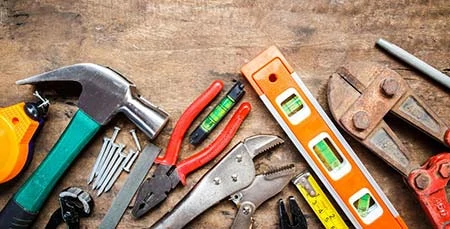
- Industrial-size eyehook screw
- Strap
- Hoop anchor
- Spanner
- Sandbag
- Bricks
- Hammer
- Protective gears
Step-by-step Procedures to Keep Basketball Hoop From Falling Over
You now have to follow the procedures stipulated below to make this task a reality:
Step 1: Fix the Trunk into the Ground
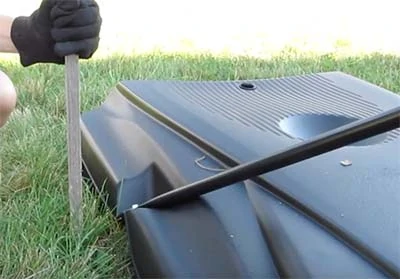
The trunk is the portion of the basketball that holds the hoop in place. It is basically the vertical shaft that keeps the hoop suspended above the ground. It is also the one that offers support and stability to the rest of the basketball gears.
Start off by fixing the trunk into the ground. The approach you will use to realize this will depend on the structure and makeup of the base. Some will require you to bore a hole yet others come ready for installation. Whichever the case is, be sure that the base is firm and does not shake at all.
Take care of the soil that constitutes the base as well. Different soils have different strengths and these too may have a bearing on the stability of both the trunk and the hoop. You may need to reinforce the soil that is at the base of the trunk if need be.
Step 2: Fix some weight on top of the Base
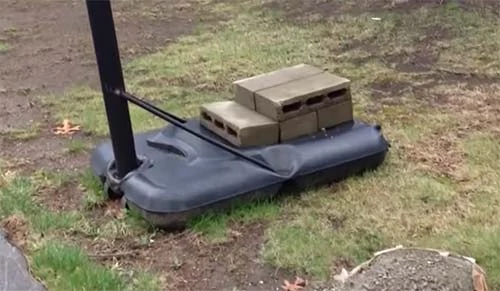
Other than merely fixing the trunk in place, you also need to reinforce the stability thereof. This can only happen if you attach some weight at the base. Examples of the tools and materials that may come in handy at such times are the sandbags, water, and brinks.
This procedure is, by all means, non-negotiable in case you happen to reside in a locality that experiences harsh winds and hurricanes. This is because these issues normally have the potential of flipping over the basketballs even if the ordinary steps were adhered to while fixing it onto the ground.
Take great care as you do this. In most cases, these materials often end up posing additional health hazards rather than serving the role of securing the trunks in place. Of particular concern to you should be the small children and unsuspecting passersby.
Step 3: Fasten the Base with the Straps
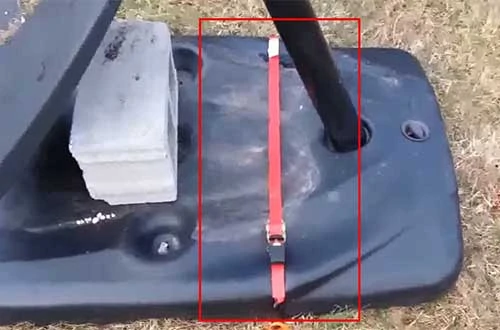
You now have to go the extra mile of fastening the base with some straps. To do this, take the industrial-size eyehook screw and fix it firmly into the ground. You may use bare hands (if you have the muscle) or a large spanner if you lack the same to do the job.
Be sure to drive the screw as deeper into the ground as is practically possible. Then take the straps and fasten on one of the screws. Lay the strap over the base of the basketball trunk and attach it to the other screw. Thereafter, fasten appropriately until the strap is extremely tight and irrevocable.
Step 4: Prop the Trunk
As a last intervention measure, you may consider propping the trunk. Propping simply means offering added support to the trunk to keep it in the upright position at all times. This step is necessary as it shields the trunk from the unlikely event of tipping over when bombarded with extremely strong winds. It also guards against the cheeky child who may often want to suspend itself on the hoop.
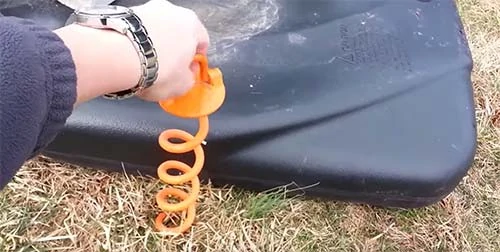
No other material enables you to accomplish this role better than the hoop anchor. It has a firm base and is also very strong. This makes it suited for the task of offering added support to the base and making it resilient to the harsh environmental conditions.
Step 5: Test the Work
It goes without saying that the work has to be tested before it can be safely and conveniently declared done. Testing the work in this sense means trying to figure out whether the final outcome is robust and secure enough for the potentially harsh forces such as strong winds, high impacts, and other external elements.
You may consider jumping and suspending yourself on the hoop or hitting it very hard with the basketball. Take note of any issues that may arise in the course of doing this. Thereafter, make the necessary adjustments. These could include tightening the screws, attaching an extra weight at the base, or even reinforcing the soil on which the trunk is fixed.
Closing Remarks
Well, as you may well have already noted, keeping the basketball hoop from falling over is not so much of a mean feat. It requires some tools, materials, and great expertise to actualize.
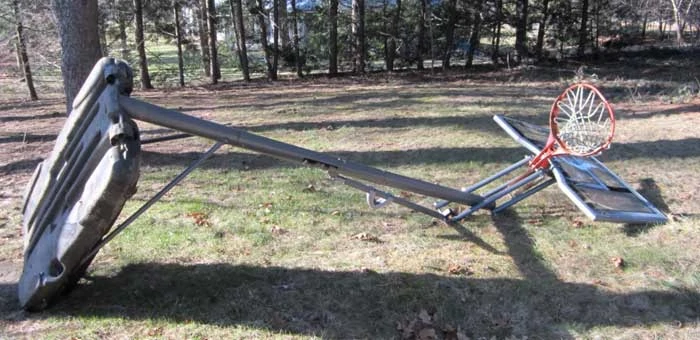
Given that you may hardly possess all these co-operant tools and skill at a time, it makes sense to delegate this responsibility to a trained expert or some person who possesses them. It is only then that you will be sure to derive the best ever outcomes possible!
If you want to avoid this hassel than switch to best in-ground basketball hoops.
Frequently Asked Questions
How do you stabilize a basketball hoop?
To make certain that your basketball hoop is stabilized you can add extra weight at the bottom using sandbags. The sandbags can be removed when you want to move the hoop and replaced when the hoop is in the new location. If you have water in the base you can switch to base gel which is heavier and more stable. You can also use a ground anchor and ratchet straps to stabilize your hoop.
How many bags of sand do I need for a basketball hoop?
The majority of portable hoops have a 35 gallon base. That means you will need about ten of the fifty pound bags of sand available at a local hardware supply. If the base holds less than 35 gallons you will need less sand. Some people fill the base with water instead of sand and use additional sand bags placed on top of the base for more stabilization.
How hard is it to move portable basketball hoop?
Moving a portable basketball hoop is not hard. The weighted base is usually filled with water or sand. The water filled base is easy to let the water out, move the base, and then refill with water. Generally a water filled base hoop can be moved by one person. If the base is filled with sand it is more difficult to remove the sand and refill the base. Some portable bases have wheels designed to help you move the hoop easily.
Read our blog Stepien Rules to know more about basketball hoops.Cheers!!
